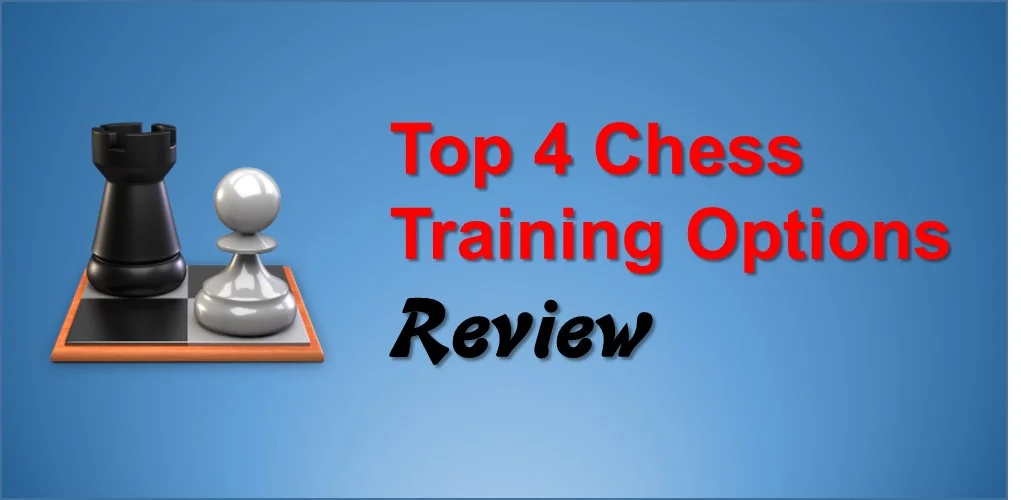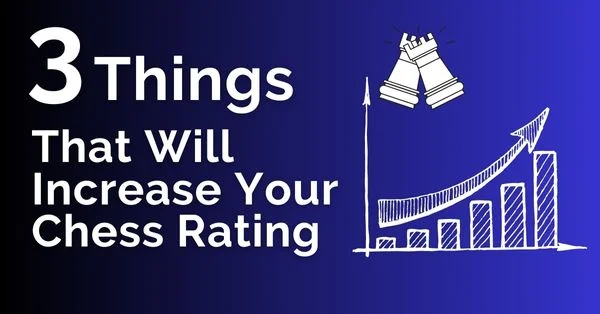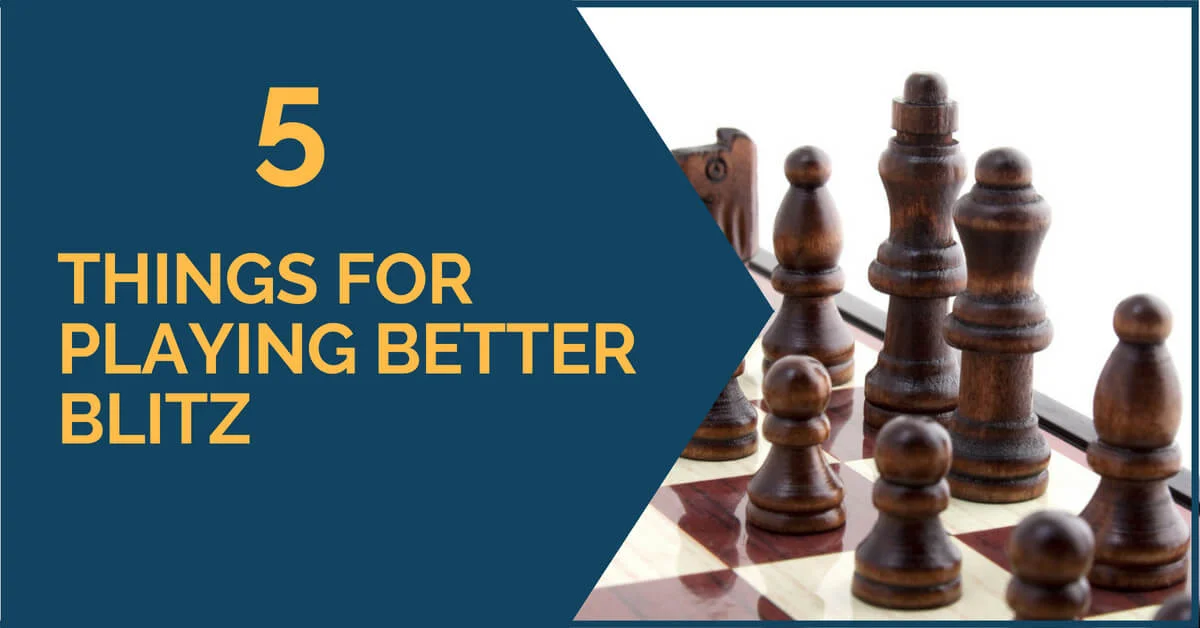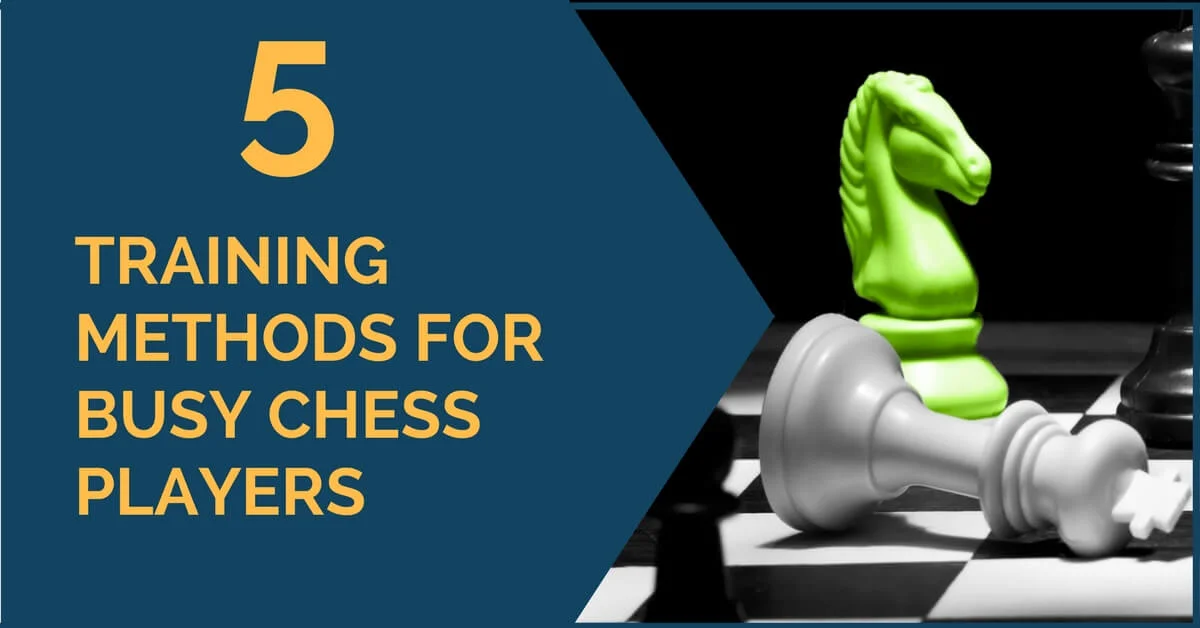Top 4 Chess Training Options: Review

Many chess players ask me the same question, how to improve at chess. There are different options available that can get you where you want to be with your chess.
In today’s article, we will look at different training options and will try to figure out which ones make sense and which ones not so much.
***
There are 4 main chess training options as shown in the table below. We will discuss each one in detail.

Price of training – how much does it cost to learn chess using this training method.
Training efficiency – how much you will learn per unit of time invested.
Time required – how much free time do you need to spend using this training method to achieve reasonable results.
Success rate – how many players reach their goal using this training method.

1. Training at a local chess club
It is not that hard to find a decent size chess club nowadays, even if you don’t live in a highly populated area. The beauty of a chess club, it is almost free and accessible to chess players of all rating and ages.
Typically, chess club is not a place for studying chess in a general sense of that word. Players come to chess club to play few games, socialize and maybe learn a thing or two from stronger players, who typically are happy to give a tip to beginners.
Unless you are a super low rated player, most games will be played against players of your own (or similar) strength, since stronger players prefer playing against the likes. Therefore, except for experience you will not gain much in terms of chess understanding. It is a great place to try out new ideas and build confidence.
Also, you need to take into account that in most chess clubs the typical time control for games is no longer than 30 minutes (at most) per side. If your goal is to learn to play classical time control you need to practice at longer time controls.

2. Self-Education
There are only a handful number of chess players that were able to achieve any significant tournament results without a proper guidance or training system. Most chess players do not know what to study, how to study it and why they are studying this or that. They also do not know exactly where to get the information they need and get lost in the ocean of chess knowledge, both online and offline.
That is why the self-education is not the most efficient chess training approach, since you need to learn from your own mistakes and you will make a lot of them on your way, trust me! It can be done, it’s just a very long journey.
Keeping things simple I will just say that there are some people that succeeded this way (Bobby Fischer is the most prominent example), but for the most of amateur players it is a lot of trouble, a lot of wondering around and many lost months if not years, looking for the ways to improve.
Do not get me wrong, self-education is important, but it needs to be done in a smart way, with the right tools and resources which can be obtained from a coach or a good training course.

3. Personal Coach
Hiring a personal coach is no doubt, the fastest and most efficient way to improve your game. A good coach can quickly evaluate your game, and find strengths and weaknesses that you have. Then, he can suggest an individual training program to fits your needs, in order to develop your strong sides and eliminate the weak ones.
The most serious drawback here is the price. A good coach can easily charge $100 per hour. In order for him to evaluate your chess, suggest the right training program, guide you through some theory and probably analyze some of the classical games, you need to be ready to pay for 15-20 hours at the very minimum.
Another thing you need to keep in mind that all of the above only applies to a good chess coach. A good coach should be passionate about chess, have experience in teaching students, and be a strong player himself. He should be motivated at teaching you, not only because you pay him for his services, but also because he wants to see you succeed. Keep these things in mind when you are looking for a coach.

4. Online Training
Another type of chess training is an online training. Computers is what made it possible to create the youngest GM ever Sergey Karjakin at the age of 12. For comparison, Bobby Fischer became GM at the age of 15.
Online training has many advantages in comparison to traditional training. First of all, a good online chess course can guide you through all the steps necessary to improve your game, providing you with all the information needed either in one package or at least referring you to the right resources.
There are certain chess technologies such as computer analysis, interactive game boards, and tactics trainers that can make training process more efficient and less time consuming.
Another advantage of online training, is that you have the entire training course available for you 24/7 even when you’re traveling, waiting for a bus or a friend, as long as you have your phone, tablet or laptop with you. When you have a spare 15 minutes, you can invest it in chess, without spending your otherwise valuable time. Online chess training is great for time management. With personal coach you do not have such a flexibility.
There are many online chess training programs available. Some are okay, some are not so good. That is why we have created our own chess training program that will show you exactly what to do in order to dramatically improve your chess. It is effective and time efficient. You can get our chess course for just a fraction of what a personal coach charges for just one hour. Here, you will get the full 3 weeks of training! To see the list of topics covered in our course and to read the reviews please go here.
You may ask, does online training has disadvantages?
Sure it does. The main disadvantage is that in comparison to a personal coach or chess club there is no person-to-person interaction. It may be harder to stay motivated and dedicated to chess. Therefore, I would suggest playing against other players online or in your chess clubs to apply the things you have learned.
Conclusion:
1. Training at the local Chess Club – so-called training by experience. You will play many games [mostly] against chess players of your own strength. This is an inexpensive, very time consuming option and not a very efficient option to improve your chess.
2. Self-Education – this option can work for some, mostly for very dedicated players who can afford spending 6-8 hours per day on their chess. It is inexpensive and very time consuming.
3. Personal coach – the fastest and the least time consuming option. But it comes at a price, good coaches are not cheap. This is by far, the most expensive option.
4. Online Training – has many advantages in comparison to the first 2 options. A good training course will give you a step-by-step guide that will help you to improve your chess. It is not as efficient and fast as having a personal coach, but it is a lot less expensive, and has about 70% of the benefits.










Comments: